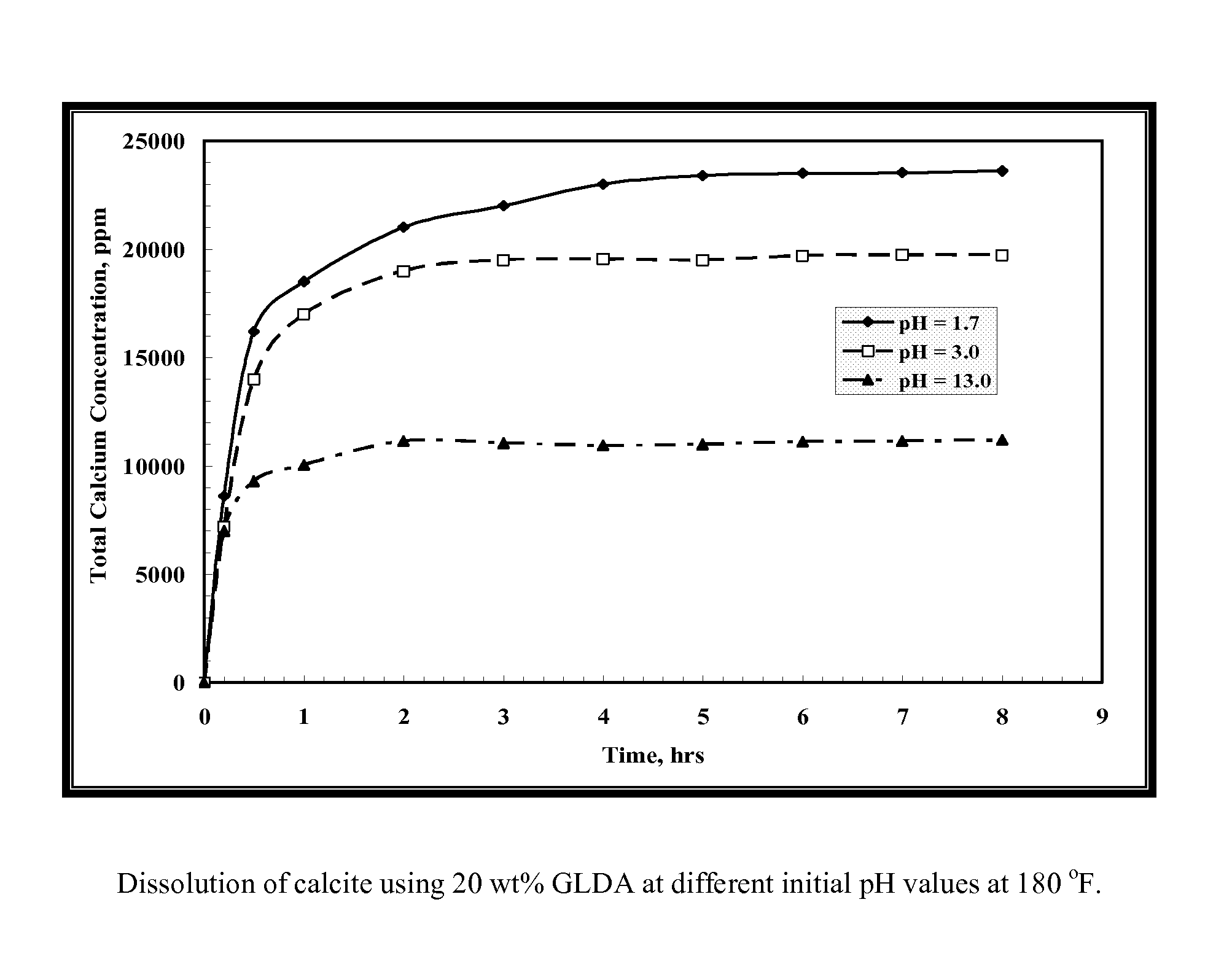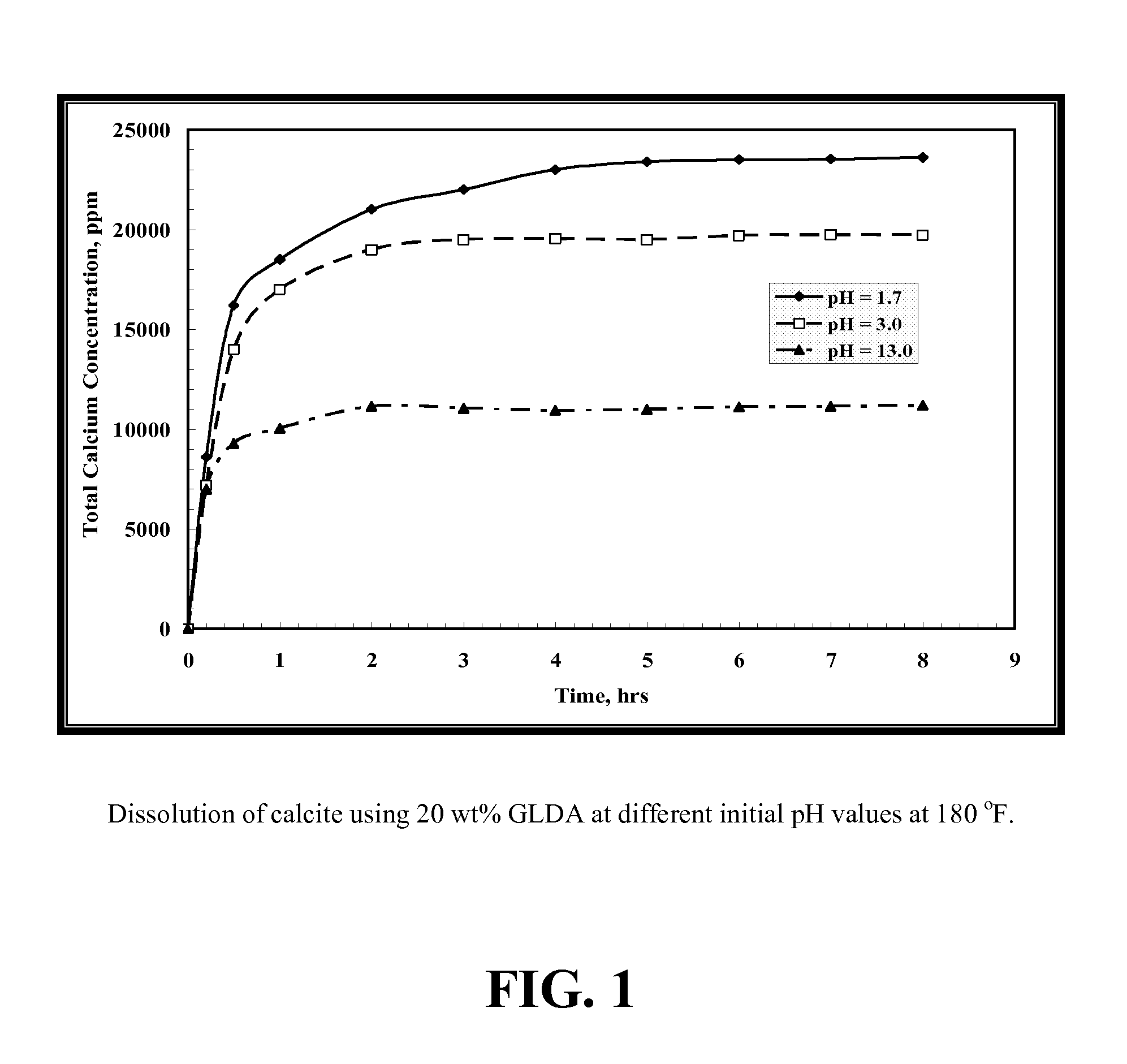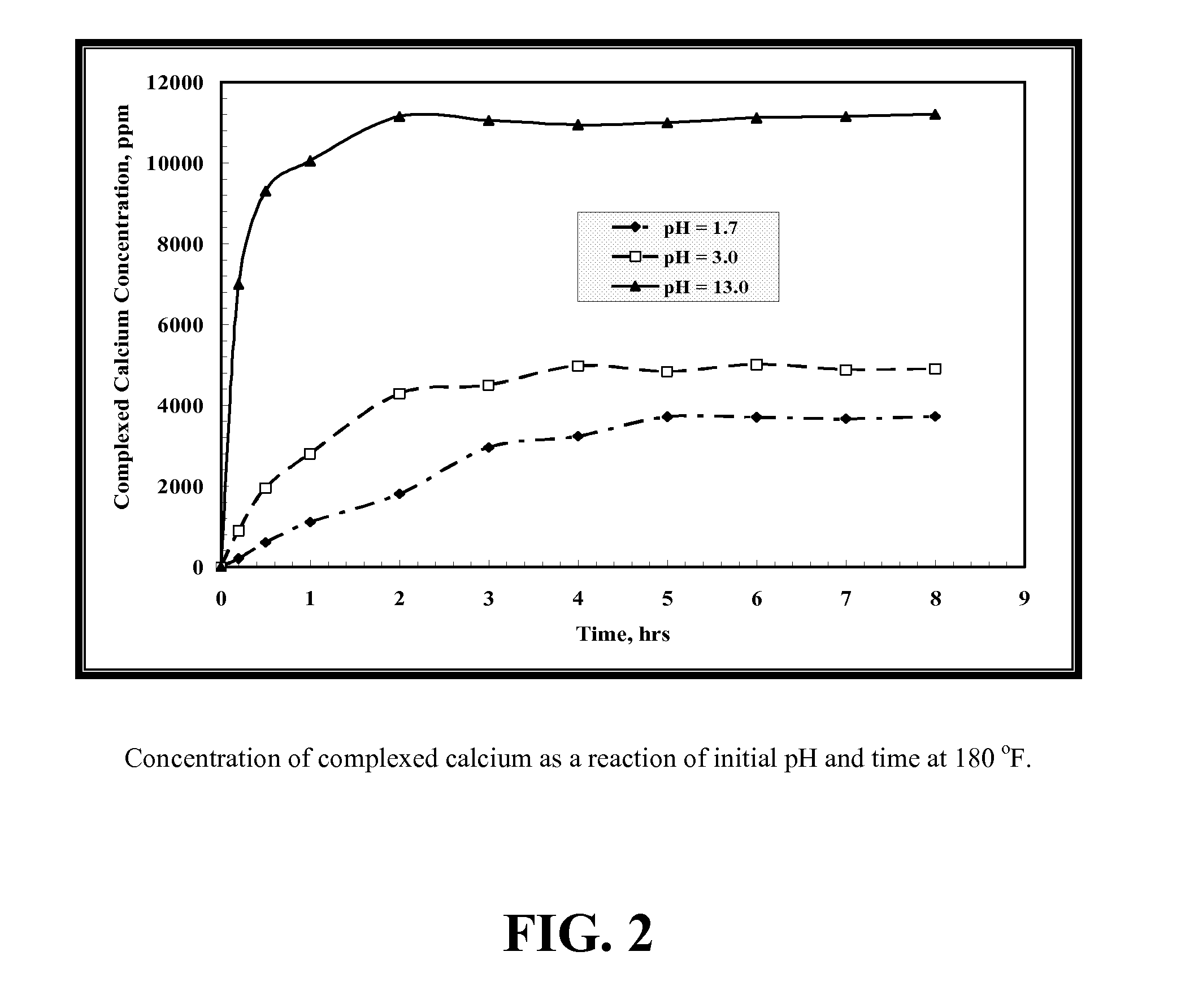Environmentally friendly stimulation fluids, processes to create wormholes in carbonate reservoirs, and processes to remove wellbore damage in carbonate reservoirs
a stimulation fluid and carbonate technology, applied in the direction of wellbore/well accessories, sealing/packing, chemistry apparatus and processes, etc., can solve the problems of low solubility of edta in hcl and inability to readily biodegrade, and achieve the effect of decreasing chelating ability, constant molar ratio, and constant glda/calcite molar ratio
- Summary
- Abstract
- Description
- Claims
- Application Information
AI Technical Summary
Benefits of technology
Problems solved by technology
Method used
Image
Examples
example 1
Effect of pH
[0107]GLDA / calcite slurries at a 1.5 molar ratio were put in the reaction flask at 180° F. To maintain a constant molar ratio between the calcite and GLDA, each sample was collected from a single test to keep a constant GLDA / calcite molar ratio. As shown in FIG. 1, the total calcium concentration increased with time until reaching a plateau value after 3 hours. The same behavior was noticed at all pH values. The total calcium concentration decreased as the GLDA pH value was increased. There are two reaction regimes; at low pH the acidic dissolution prevails, whereas at high pH CaCO3 is removed by complexation of calcium with the chelate. The reaction rate is primarily driven by the acidic dissolution. At low pH the reaction is fast and it slows down with increasing pH.
example 2
Effect of pH
[0108]FIG. 2 shows the complexed calcium concentrations at different pH values of GLDA at 180° F. The maximum amount of chelated calcium was noted at a pH of 13 where no free calcium remained. At high pH, the dissolution mechanism was only by the chelation reaction. As the pH decreased, the chelating ability decreased and free calcium concentration increased. At low pH, the dissolution mechanism is due to both chelation and acid dissolution (mass transfer). The highest free calcium concentration was obtained with GLDA-calcium solutions at pH=1.7.
example 3
Effect of pH
[0109]FIG. 3 shows the effect of the initial pH value on the calcite dissolution using 20 wt % GLDA solutions. There is an S-shaped relationship between the ratio of complexed / maximum complexed calcium and equilibrium pH of the GLDA solutions. The maximum complexed calcium was obtained at a pH of 13. As the pH increased, the ratio became closer to 1, meaning less free calcium exists in solution at high pH. At low pH, the ratio was very small as there was a small amount of chelated calcium compared to the total calcium concentration. At a low pH of 1.7, the GLDA exists principally in an acid form and does not chelate Ca effectively because hydrogen ions occupy the carboxylic acid groups. As the pH increased, GLDA reached a maximum chelating ability as it becomes fully deprotonated.
PUM
| Property | Measurement | Unit |
|---|---|---|
| wt % | aaaaa | aaaaa |
| temperature | aaaaa | aaaaa |
| temperature | aaaaa | aaaaa |
Abstract
Description
Claims
Application Information
 Login to View More
Login to View More - R&D
- Intellectual Property
- Life Sciences
- Materials
- Tech Scout
- Unparalleled Data Quality
- Higher Quality Content
- 60% Fewer Hallucinations
Browse by: Latest US Patents, China's latest patents, Technical Efficacy Thesaurus, Application Domain, Technology Topic, Popular Technical Reports.
© 2025 PatSnap. All rights reserved.Legal|Privacy policy|Modern Slavery Act Transparency Statement|Sitemap|About US| Contact US: help@patsnap.com



